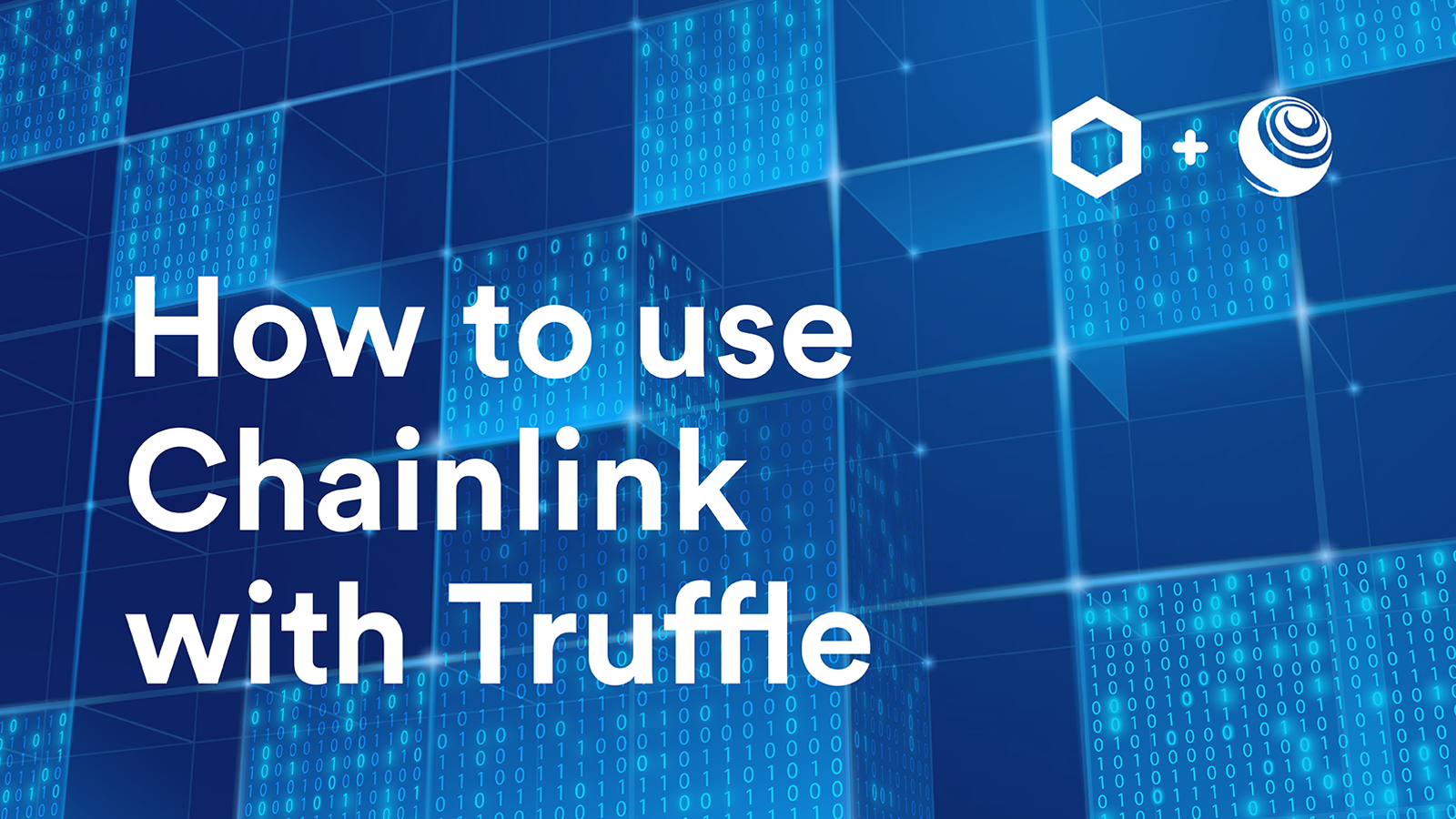Using Truffle to interact with Chainlink Smart Contracts

Chainlink is one of the leading blockchain projects building the very first decentralized oracle network that provides external data to smart contracts. Truffle helps smart contract developers by providing a powerful framework to create, test, and deploy smart contracts. In Chainlink’s blog post, their Chainlink Truffle Box has gotten some significant upgrades! If you were fortunate enough to attend Trufflecon 2019, then you have already seen these improvements in action, thanks to Chainlink’s presentation by Thomas Hodges. To start developing your very own Chainlink smart contracts, you can grab Chainlink’s Truffle Box by following the guide here.
This article will showcase these brand new additions, starting with Truffle Scripts. Scripts create a much easier approach to interact with our contracts, allowing us to fund a contract with LINK, request data from it, and read the contract’s data with only three commands. To demonstrate this functionality, we will first need to set up our environment variables: MNEMONIC and RPC_URL.
Working with blockchain technology requires a wallet, with one of the most popular choices being MetaMask. Within minutes, you can have your very own Ethereum wallet that allows you to easily interact with various dApps. During account generation, you will be shown your secret 12-word seed phrase, known as your mnemonic. (Do not share this with anyone; if someone knows your mnemonic they WILL have access to your addresses and private keys). Be sure to store this mnemonic somewhere safe, as you will need it later to work with our example.
Furthermore, you will also need to fund your MetaMask wallet with test LINK and test ETH, in order to power transactions on the Ropsten Ethereum Testnet.
Note: When funding your account from a test faucet, make sure you switch from the default Main Ethereum Network to the Ropsten Test Network, to properly see your funds. You can follow any transactions made on the Ropsten Testnet via Etherscan.
Our second environment variable will require an RPC URL. Some popular RPC connectivity services include Infura, LinkPool, and Fiews. After establishing a valid RPC connection and the funded address, you can start deploying smart contracts to public networks.

Once you have all the data you need, you can set your environment variables via the terminal commands:
export RPC_URL=your_url_here
export MNEMONIC=’your 12 words here’
Migration¶
We are now ready to deploy our smart contract on a public network. To begin, run the command:
npm run migrate:live
This will compile all of your smart contracts, and then start deploying (migrating) them.
Note: you may encounter some compilation warnings with the Chainlink contracts. This is simply because the LINK token was originally deployed with an older version of Solidity. Given that this contract is only being deployed when you run tests, these can be ignored.

Deploying our Migrations and MyContract cost us Ethereum, hence why we needed the faucet from earlier. Now that our contract is deployed, we can utilize the three helper scripts to fund MyContract with LINK (which we got from the Chainlink faucet), create requests, and read the state.
There are 3 helper scripts provided to interact with our contract, located in the scripts directory:
fund-contract.jsrequest-data.jsread-contract.js
They can be used by calling them from npx truffle exec. First, we must fund our contract with LINK, which can be done by running the following command:
npx truffle exec scripts/fund-contract.js --network live

Following deployment, the output displays our contract address as well as the transaction address. We can also look this up on the ropsten explorer.

Notice that upon completion, a payment of 1 LINK was sent during the transaction, clearly indicating that our contract has properly been funded. Next, we can now request data from the contract by running:
npx truffle exec scripts/request-data.js --network live

And finally, for reading the data we run our read-contract script. In particular, this will run faster because we’re not creating a transaction, we are simply reading the current state of the smart contract.
npx truffle exec scripts/read-contract.js --network live

Notice for our output when reading the data, we get a number displaying the current price of LINK in USD * 100 (as of writing, 22094). This is due to the value of times specified in our smart contract request-data.js.

Thanks to the power of Truffle, it has never been easier to work with smart contract development. We hope you enjoyed working with our Chainlink Truffle Box, allowing you to fully test, deploy, and interact with contracts on the network. Thanks for reading, and stay tuned for future updates at https://blog.chain.link/.